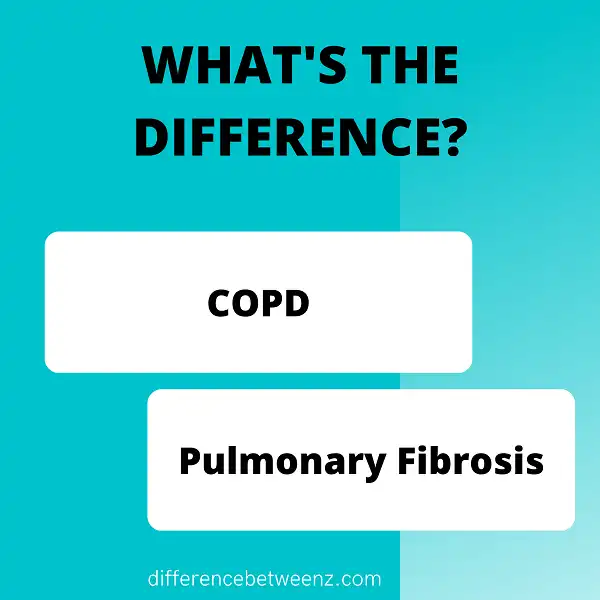Chronic obstructive pulmonary disease (COPD) and pulmonary fibrosis are two serious chronic lung conditions that can greatly affect a person’s quality of life. For those who suffer from symptoms associated with either one, understanding the distinctions between these two diseases is vitally important for obtaining effective treatment. In this blog post, we’ll look at the key differences between COPD and pulmonary fibrosis so you can gain a better comprehension of which condition you may have or be prone to in the future.
What is COPD?
- COPD, or Chronic Obstructive Pulmonary Disease, is a chronic, progressive lung condition characterized by persistent airflow limitation which limits the ability to breathe. COPD can often overlap with other disorders such as asthma and bronchitis and create an enhanced set of symptoms due to combined effects.
- COPD has no known cure but there are effective treatments available for optimal symptom management. These treatments range from lifestyle changes such as exercise and smoking cessation to medical interventions such as inhalers, oxygen therapy, surgery, and more.
- COPD is also associated with shortness of breath, wheezing, and coughing with mucus production on a regular basis. Proper diagnosis and treatment of COPD are key in helping reduce symptoms, improving quality of life, and avoiding serious complications.
What is Pulmonary Fibrosis?
- Pulmonary Fibrosis is an incurable, progressive lung disease where scar tissue builds up around air sacs in the lungs. As this scarring becomes worse over time, it can significantly limit a person’s ability to breathe.
- Pulmonary Fibrosis often occurs after a bout of another lung disease such as pneumonia or bronchitis, although it can occur without any known cause.
- Pulmonary Fibrosis needs to be managed properly, as complications such as fatigue and lung infections can occur if not treated early. Treatments for Pulmonary Fibrosis may include oxygen therapy, medications, and lifestyle changes to help improve breathing and quality of life.
Difference between COPD and Pulmonary Fibrosis
COPD and Pulmonary Fibrosis are two different respiratory conditions that affect the lungs, but they have some notable differences.
- COPD is an umbrella term used to describe a group of chronic diseases, such as chronic bronchitis, which can cause airflow obstruction in the lungs.
- Pulmonary Fibrosis, on the other hand, is caused by scar tissue that accumulates in the alveoli of the lungs and can cause air trapping and reduce elasticity.
- COPD typically worsens over time due to constantly inflamed airways and often requires frequent doses of medication to alleviate symptoms.
In contrast, pulmonary fibrosis is characterized by gradual decline and there are treatments available that can slow or stop further tissue damage over time. COPD and pulmonary fibrosis both require careful management to ensure continued health and quality of life.
Conclusion
If you have COPD, your lungs are damaged and they don’t work as well as they should. This can make it hard to breathe. People with pulmonary fibrosis also have damage to their lungs. But in this case, the damage is done by scarring of the lung tissue. It’s not clear what causes this type of lung disease. Often, many different things play a role, including genetics; exposure to certain chemicals, dusts, or other irritants; and smoking. If you think you might have either of these diseases, see your doctor right away so you can get started on treatment and feel better soon.


